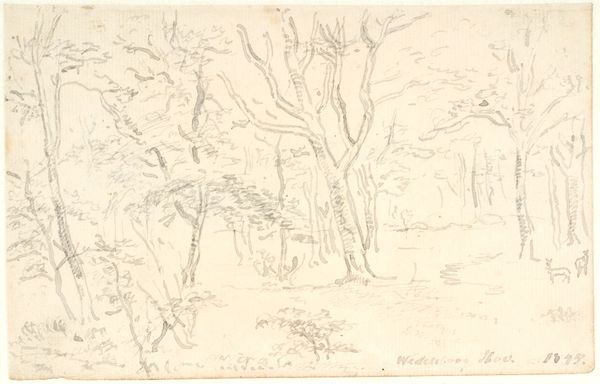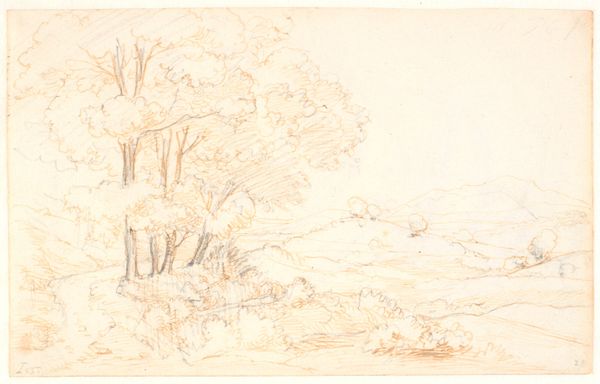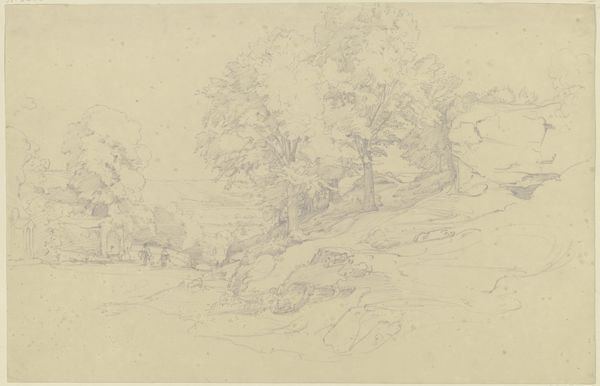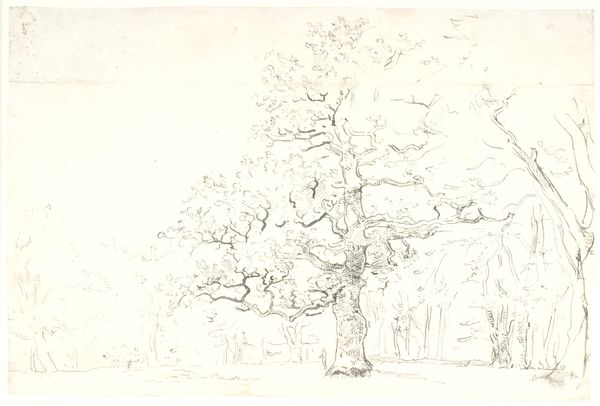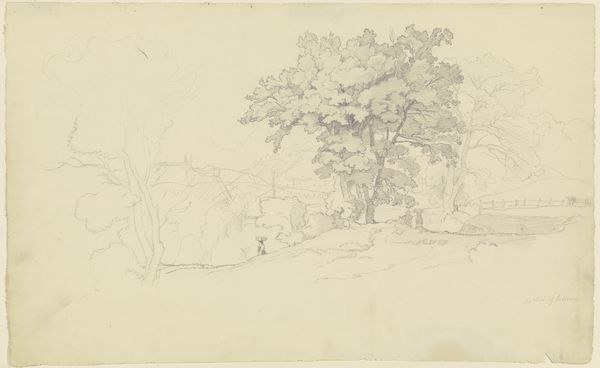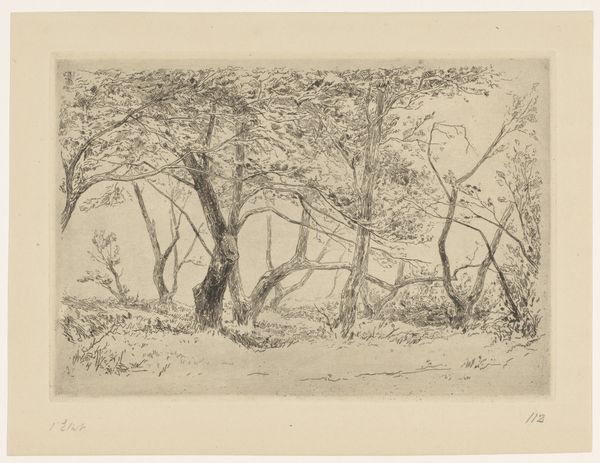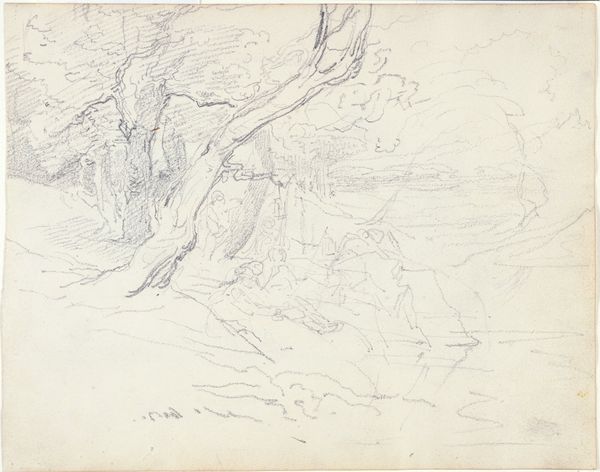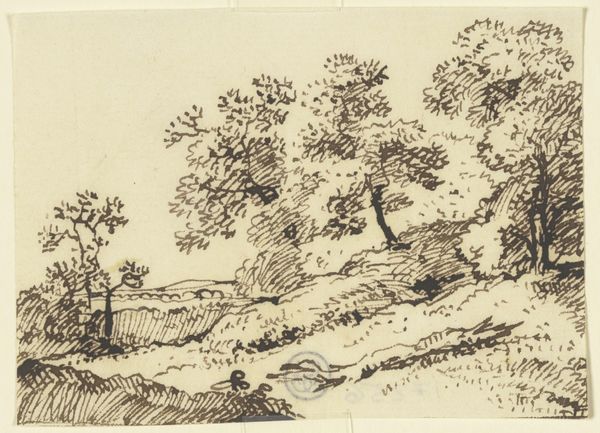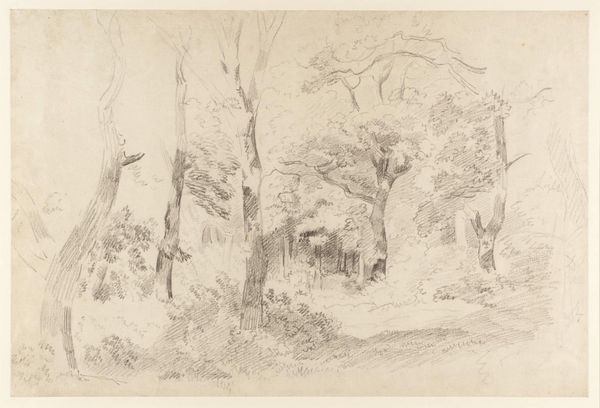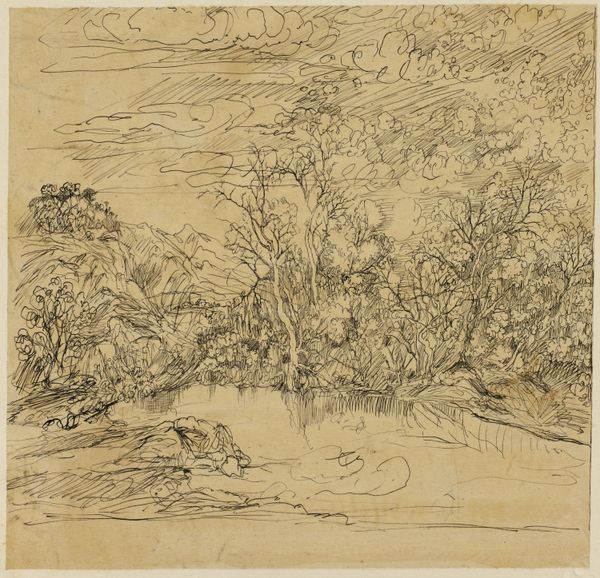
drawing
#
landscape illustration sketch
#
drawing
#
pen sketch
#
botanical illustration
#
etching
#
fluid art
#
ink drawing experimentation
#
pen-ink sketch
#
botanical drawing
#
watercolour illustration
#
botanical art
Dimensions: 183 mm (height) x 220 mm (width) (bladmaal)
Curator: Today we are looking at a pen and ink drawing titled "Store traeer i udkanten af en skov" - that translates to "Large Trees on the Edge of a Forest" - by Dankvart Dreyer, created around 1850. What are your initial thoughts? Editor: There's a sense of stillness about it, almost meditative. The bare branches sketched in sepia tones create a skeletal framework against what seems like a vast, pale sky. Curator: Indeed. It's fascinating how Dreyer employs such economical lines to render the complex forms of these trees. Given the period, and the rise of industrialisation, these arboreal images take on the aura of handcrafted landscapes; each stroke emphasizing Dreyer’s labor. Editor: I’m drawn to how the edge of the forest serves as a metaphor here. The space where wilderness meets civilization. Consider how Romanticism in this era often sought refuge in nature to critique the emerging socio-political climate. What’s on the periphery and who is allowed in? Curator: Exactly. Dreyer's technique highlights the materiality of the work itself. We see the fibers of the paper, the bleed of the ink, the very hand of the artist at work. There is no hiding the creation process itself. It reminds us this image has its own inherent making. Editor: This almost ghostly scene could speak to disenfranchisement. Looking closer, you notice how solitary these trees are – individuals in a mass – inviting contemplation of how the margins impact our sense of belonging. The composition is stark in its portrayal, triggering broader conversations about marginalization, gender, race, or class perhaps. Curator: That’s insightful. And returning to production, one wonders how widely disseminated such images were. Did they serve as studies? Did they function in print production of other landscape painting processes in 19th century print culture? It calls forth an entire matrix of artisanal creation that this piece represents. Editor: A powerful tension exists between its objective beauty and possible underlying social commentary, making it ripe for multiple interpretations. It forces us to reconsider established hierarchies—to acknowledge that this "simple" depiction holds a layered social mirror. Curator: I agree. This humble landscape drawing opens vistas into complex processes and material histories, shifting it far from something simply ‘picturesque.’ Editor: Absolutely. A piece like this reminds us how potent images can be – small visual portals to bigger cultural reflections.
Comments
No comments
Be the first to comment and join the conversation on the ultimate creative platform.
